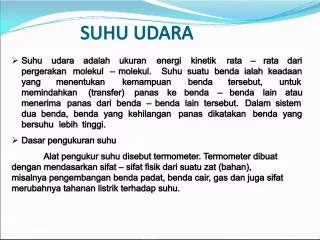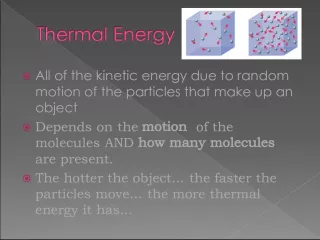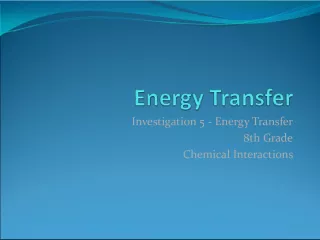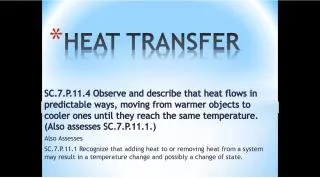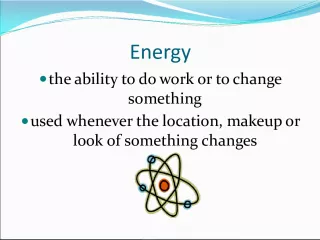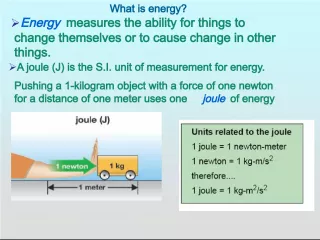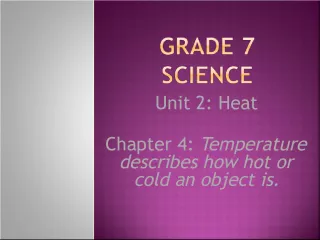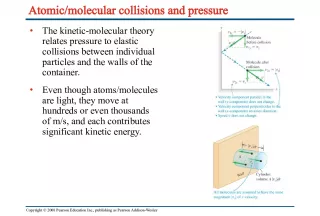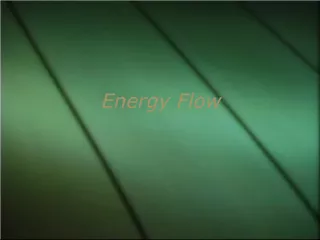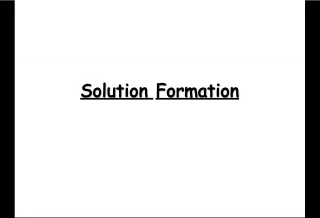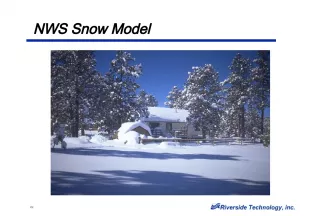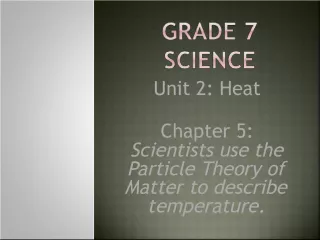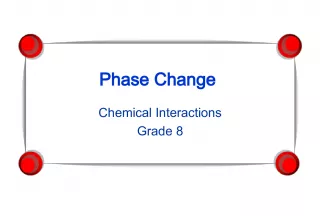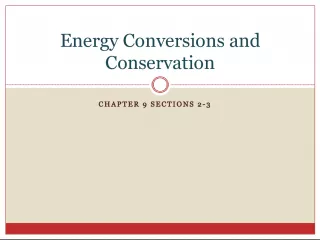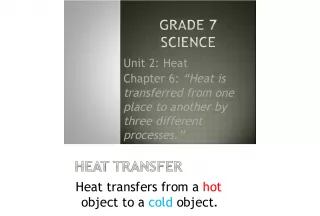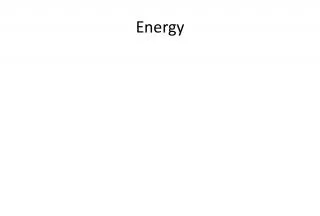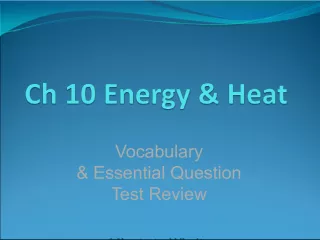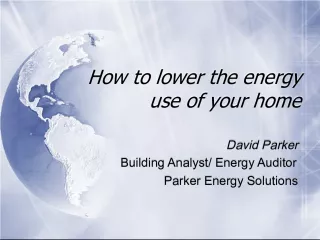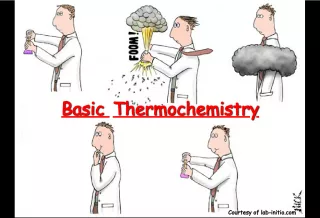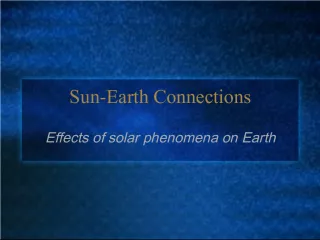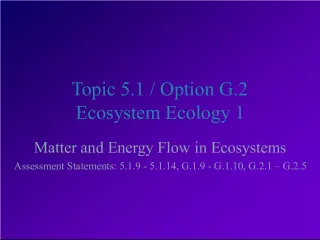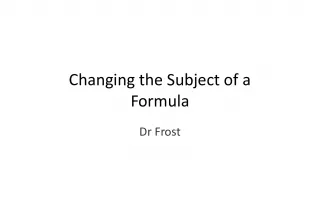Temperature, Heat, and Kinetic Energy
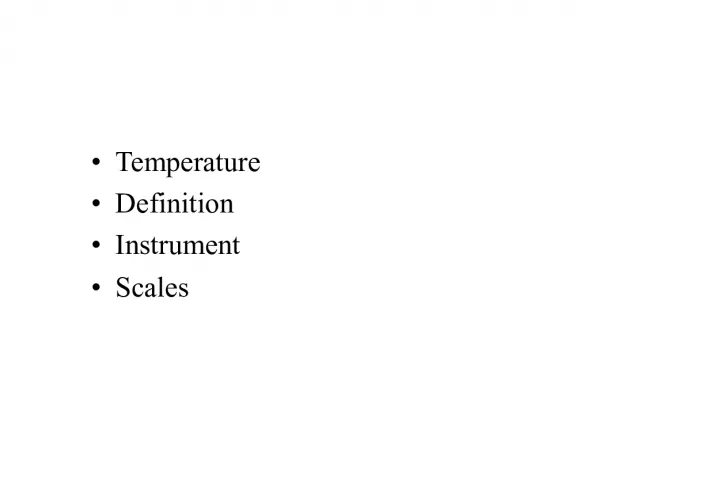

Learn the difference between temperature and heat, and how kinetic energy is related to temperature. Celsius and Kelvin scales are most commonly used to measure temperature.
- Uploaded on | 5 Views
-
 philippewalker
philippewalker
About Temperature, Heat, and Kinetic Energy
PowerPoint presentation about 'Temperature, Heat, and Kinetic Energy'. This presentation describes the topic on Learn the difference between temperature and heat, and how kinetic energy is related to temperature. Celsius and Kelvin scales are most commonly used to measure temperature.. The key topics included in this slideshow are . Download this presentation absolutely free.
Presentation Transcript
Slide1•Temperature • Definition • Instrument • Scales
Slide2TEMPERATURE• Is associated with heat but it is NOT HEAT. IT IS NOT A FORM OF ENERGY!!!! • ( Heat is) • Review: What is KINETIC ENERGY?
Slide3KINETIC ENERGY (KE)• Is associated with movement. • If an object is moving fast has high KE • If an object is moving slowly it has low KE
Slide4Temperature• In scientific measurements, the Celsius and Kelvin scales are most often used. • The Celsius scale is based on the properties of water. □ 0 C is the freezing point of water. □ 100 C is the boiling point of water.
Slide5Temperature:A measure of the average kinetic energy of the particles in a sample . If an object is at HIGH temperature its particles are moving FAST At LOW temperature particles move SLOWLY
Slide6Instrument to measuretemperature THERMOMETER
Slide7FIXED POINTS OF ATHERMOMETER • BOILING POINT OF WATER • FREEZING POINT OF WATER
Slide8Temperature• The Kelvin is the SI unit of temperature. • It is based on the properties of gases. • There are no negative Kelvin temperatures. • K = C + 273.15
Slide9Temperature• The Fahrenheit scale is not used in scientific measurements. • F = 9/5( C) + 32 • C = 5/9( F − 32)
Slide102. SI unit for temp. is the Kelvin a. K = C + 273 (10C = 283K) b. C = K – 273 (10K = -263C)
Slide11DO NOW1. What is 35 ºC in Kelvin? 2. What is 10 K in ºC?
Slide12What is the temperature of thebeakers? • Which one needs more heat to boil? • What is the difference between heat and temperature?
Slide13•What is the relationship between heat and temperature?
Slide141. Temperature is the average kineticenergy of the particles in a substance.
Slide15Heat and Temperature• The temperature of an object tells us how HOT the object is. It is measured in degrees Celsius - °C, with a thermometer. • Temperature is NOT a form of energy. • HEAT IS A FORM OF ENERGY!!!
Slide16So how temperature and heat arerelated? • Temperature is NOT the same as HEAT ENERGY although the two quantities are related.
Slide17They are both a the sametemperature. Which contains more heat?
Slide18•Types of energy • POTENTIAL ENERGY : STORED ENERGY. The energy inside the substance. • KINETIC ENERGY : Associated with motion. Average KE = TEMPERATURE
Slide19HEAT• The form of ENERGY that flows between two samples of matter due to their difference in temperature. • It is measured in Joules. Other units are calories and kJ. • It cannot be measured directly!
Slide20 Heat Heat always flows from warmer (HIGH T) to cooler(LOW T) objects . Ice gets warmer while hand gets cooler Cup gets cooler while hand gets warmer
Slide21Energy• The ability to do work. • Energy is measured in Joules (J) • Any change re quires energy. Changes can be Exothermic or Endothermic • Exothermic changes- release or give off heat while they occur. (condensation, freezing) • Endothermic changes Absorb heat as they occur (melting, boiling)
Slide22ENERGY AND CHEMICALREACTIONS • EXOTHERMIC REACTIONS: reactions that RELEASE heat as they occur. Example: any combustion. • ENDOTHERMIC REACTIONS: reactions that ABSORB heat energy as they occur.
Slide23Heating and Cooling• If an object has become hotter , it means that it has gained heat energy. • If an object cools down , it means it has lost energy
Slide246. Specific Heat a. Some things heat up or cool down faster than others. Land heats up and cools down faster than water
Slide25HEAT CAPACITY• The amount of heat needed to increase the temperature of a material by 1 o C. It depends on the MASS and the CHEMICAL COMPOSITION of the material.
Slide26SPECIFIC HEAT CAPACITY• The amount of heat needed to increase the temperature of 1 g of substance by 1 C. • Depends only on the chemical composition.
Slide27SPECIFIC HEAT CAPACITYMATERIAL SPECIFIC HEAT J/g C Water 4.18 Alcohol 2.43 Aluminum 0.90 Iron 0.45 Lead 0.13 Sand 0.83
Slide28Why does water have such ahigh specific heat? Water molecules form strong bonds with each other; therefore it takes more heat energy to break them. Metals have weak bonds and do not need as much energy to break them. water metal
Slide29How to calculate changes in HEATThe heat absorbed or released in a chemical reaction Q = m x T x C p Q = H E A T m = m a s s o f s u b s t a n c e T = c h a n g e i n t e m p e r a t u r e ( T f – T i ) C p = s p e c i f i c h e a t o f s u b s t a n c e
Slide30 Calorimeter
Slide31Bomb CalorimetryA more sophisticated model is the bomb calorimeter, it has a chamber where a chemical reaction takes place and a device to start the reaction.
Slide32HW answers• 1) 42000 J • 2) 6300J • 3) 5 C • 4) 20 C • 5) 336 g • 6) 14700 J =14.7 kJ • 7) 14.24 % • 8) b • 9)b 10 7J (d) 1) 1 2) 4 3) 3 4) 4 5) 3 6) 3 7) 2 8) 2 9) 4
Slide33Aim: How to determine the melting point of asubstance? Challenge : To determine the melting point of water. Your write up should include the following components : I. TITLE II. PURPOSE III. MATERIALS- IV. PROCEDURE V. DATA VI. CALCULATIONS/GRAPH VII.CONCLUSION (including a discussion of sources of error.)
Slide34What is the freezing point of water?• How would the mass of the sample affect the melting point? Explain. • Describe the steps needed to determine the boiling point of water. • Describe the phase changes that take place as water melts and as water boils.
Slide35Vocabulary• condensation • deposition • freezing • fusion • gaseous phase • heat • heat of fusion • heat of vaporization • kinetic molecular theory • sublimation • temperature • vaporization • solidification • melt • solid phase • liquid phase
Slide36October 17• Objective: What are the characteristics of each state of matter? • How to determine the amount of heat needed to change state?
Slide37Phases of Matter• The structure and arrangement of particles and their interactions determine the physical state of a substance at a given temperature and pressure. • The three phases of matter (solids, liquids, and gases) have different properties.
Slide38States of Matter
Slide39States of Matter.
Slide40Particle diagrams
Slide41Phase Change• DURING A PHASE CHANGE TEMPERATURE REMAINS CONSTANT • Phase changes • Melting or Fusion: Phase change from solid to liquid. Endothermic. • Vaporization – Phase change from liquid to gas. It occurs during boiling. Endothermic.
Slide42Phase Changes• Evaporation: from liquid to gas. It occurs at all temperatures and ONLY at the surface of the liquid. Endothermic. • Condensation: From gas to liquid. Exothermic. • Freezing, solidification or crystallization: from liquid to gas. Exothermic.
Slide43Special Phase Changes• Sublimation: from solid directly to gas without changing to liquid first. • Dry Ice CO 2 (s) --> CO 2 (g) • Iodine I 2 (s) --> I 2 (g)
Slide44Special Phase Changes• Deposition: From gas to solid without going to liquid state.
Slide45Special Phase Changes
Slide46HEAT OF FUSION FORWATER (TABLE B) • Amount of heat needed to completely melt 1g of water (ice!). • 334 J/g • 334 Joules of heat are necessary to completely melt 1 g of water. • HOW MUCH HEAT IS NEEDED TO MELT 10 g OF WATER?
Slide47HEAT OF VAPORIZATIONFOR WATER (TABLE T) • The amount of heat needed to completely vaporize one g of water at its boiling point. • 2260 J/g • Water needs 2260 J of heat per gram to convert to gas!
Slide48SummarizingWhen there is a change in temperature use Q = m x C x T While the substance is melting/freezing use Q = m x H f While the substance is boiling/condensing use Q = m x H vap
Slide49Do now!• How much heat is needed to completely melt 10 g of ice at 0 0 C ? • How much heat is needed to vaporize 10 g of water at 100 0 C ?
